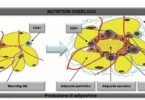OPTOGENETICS ALLOWS RESEARCHERS TO STUDY THE ROLE OF THESE CELLS IN BEHAVIOR AND BRAIN FUNCTION PRECISELY USING LIGHT.
Optogenetics has been used in a wide variety of research applications, including the study of animal brains and the treatment of human brain diseases.
In optogenetics, the main objective is to print photosensitive or photosynthetic molecules that couple to the electrically sensitive ones found in neurons naturally, causing the latter to develop sensitivity to light.
Thanks to the neuroscientists Edward Boyden, Karl Deisseroth and GeroMiesenböck, who are the creators of optogenetics, we have a novel advance in medicine to control the brain.
Optogenetics has also been used to treat diseases of the human brain, Parkinson’s disease and depression are just a few examples.
Likewise, other studies have to do with finding out how emotions are processed.
It is also used to study how behaviors such as learning, memory and movement occur.
In this sense, this technique is based on the use of light-sensitive proteins, called opsins, which can be expressed in certain brain cells and which can activate or inhibit their activity when exposed to light of a certain wavelength.
Optogenetics also presents some challenges and limitations. One of the main problems is the penetration of light, since it cannot easily pass through the skin and skull, which limits its use in humans and larger animals.
This is why light can be toxic to cells if used in doses that are too high, which requires very high precision and control to avoid tissue damage.
Likewise, the other problem is the lack of selectivity in cell activation. Neural circuits are very complex and light can activate cells that are not intended, which can lead to unexpected results and side effects. Another limitation is the duration of the response.
On the other hand, opsins have varied light absorption properties and are members of the G protein-coupled receptor family; their ligands are vitamin A-based chromophores.
Photosensitive proteins in the membranes of photoreceptor cells, such as rods and cones.
Rhodopsin is a photopigment, specifically a monomeric integral membrane glycoprotein that belongs to G protein-coupled receptors (GPCRs). Its function is to detect the photons that reach the retina of vertebrates, that is, to respond to the physical stimulus of light.
By the action of light, the rhodopsin molecule is decomposed into a protein (opsin) and retinal (aldehyde of vitamin A) and this process induces the beginning of a series of reactions that will stimulate the optic nerve, thus beginning the transmission of nerve impulses to the brain.
Rhodopsin is located in the rods of the retina. By the action of light, the rhodopsin molecule is decomposed into a protein (opsin) and retinal (aldehyde of vitamin A) and this process induces the beginning of a series of reactions that will stimulate the optic nerve, thus beginning the transmission of nerve impulses to the brain.
Therefore, we can say that optogenetics is a research technique that allows us to control and manipulate the activity of specific cells in the brain using light.
FONT
https://neuronup.com/neurociencia/que-es-la-optogenetica/







